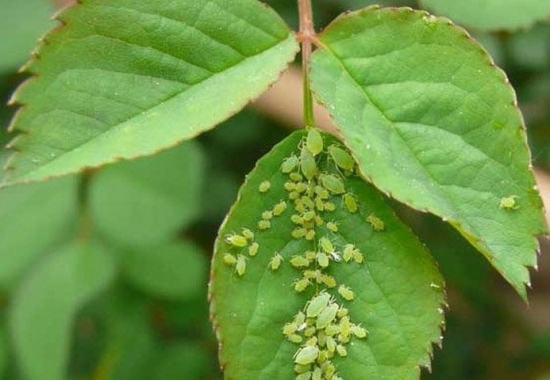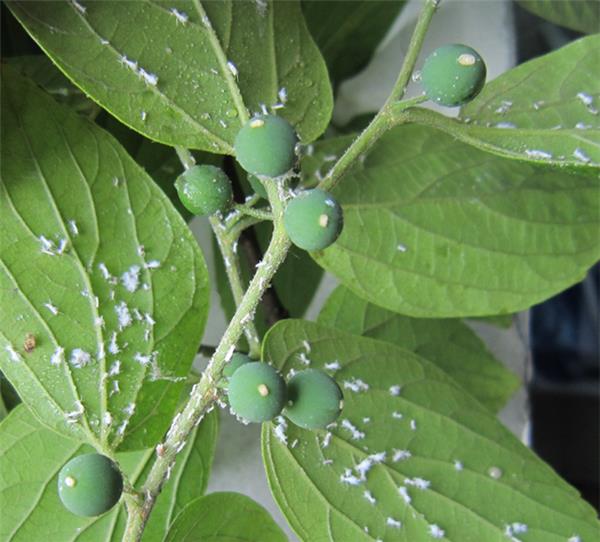[aphid control] pollution-free control methods for aphid pests
In fact, there are many methods to control aphids. For the consideration of the healthy growth of plants, we should first choose some pollution-free control methods, followed by chemical control.

1. Pollution-free control methods of aphids
1. Use sugar and vinegar to trap and kill aphids. The formula of sweet and sour liquid is as follows: wine: water: sugar: vinegar = 1, 2, 3, 3, 4. The prepared sweet and sour liquid is placed in the open utensils at the upper end, which is generally placed in the plant sites where aphids occur in large numbers in the evening, and the trapping effect is very significant.
two。 Using poplar and willow branches to trap aphids. Aphids have a strong tendency to the odor emitted by willows. For this reason, a certain amount of poplar and willow branches can be tied up and placed in plant sites where a large number of aphids occur, which can attract a large number of aphids together and facilitate centralized killing.
3. Plant ash water was used to control aphids. The method is to take 10-15 kg of plant ash and 50 kg of water and soak for 1 day and night. The next day, the supernatant is sprayed on the plants where aphids occur, which can kill two birds with one stone; it can not only effectively control aphids but also provide plant nutrition.
4. Use natural enemies to control aphids. Using natural enemies to control aphids is a more economical and effective method at present. Seven-star lady beetles are the natural enemies of aphids. For this reason, a certain amount of Coccinella septempunctata can be collected and placed on plants damaged by aphids, and the effect is very good.

2. Control aphids of tree seedlings by soil method
Method 1: take 500 grams of garlic, mash, add 5 kg of water, filter and spray.
Method 2: take 500 grams of ginger, add 250 grams of water, mash the juice, and stir the spray with 3 kilograms of water for every 500 grams of juice.
Method 3: take Platycodon grandiflorum, cut it up, boil it with 20 times of water for 1 hour, squeeze and filter after cooling, spray 667 square meters with 50 kg filtrate.
Method 4: take 200 grams of Zanthoxylum bungeanum, add 2 kg of water to boil into 1 kg of original solution, and spray 3 kg of water for every 500 g of original solution.
Method 5: the stems and leaves of Polygonum multiflorum were chopped and mashed, soaked in water 16 times for 1 day and filtered for 2 days, and 667 square meters were sprayed with 40 kg filtrate.

III. Species and control of insect pests of the same kind as aphids
1. Mites belong to the arachnid of the phylum Arthropoda, which harms many species of ornamental trees. If the mites are sprayed with 20% permethrin EC 3000 times, or 50% parathion EC 1500 times, or 40% isocarbophos EC 1000 times, or 20% dichlorvos EC 1500 times, or 35% dichlorvos EC 1500 times, or 50% phoxim EC 1500 times, etc. The spraying of gall mite should be carried out at the stage of germination or leaf germination.
two。 Thrips harmful to ornamental trees include flower thrips, Chinese thrips and so on. Spray 50% phoxim EC 1000 times, or 80% dichlorvos EC 1500 times, or 50% fenitrothion EC 1000 times, or 2.5% deltamethrin EC 2500 times.
3. Scale pest scale insect is an important pest of ornamental trees, with many species and serious harm, such as blow cotton scale, Kang's pink scale and so on. Spray 1000-1500 times of dichlorvos EC or 80-1000 times of fenitrothion EC in the newly hatched nymphs.

Although aphids can be controlled in these ways, once aphids are produced, they will cause more or less damage to plants, so in the prevention and control of aphids, we should still follow the principle of giving priority to prevention and the combination of prevention and control. try to put an end to the occurrence of aphids.
- Prev

Detailed explanation of planting techniques and maintenance methods of Robinia pseudoacacia
Detailed explanation of planting techniques and maintenance methods of Robinia pseudoacacia
- Next

Pruning principles and methods of apricot trees in different periods
Pruning principles and methods of apricot trees in different periods
Related
- Wuhan Hospital Iron Tree Blooming Result Was Instantly Frightened by the Gardener Master
- Which variety of camellia is the most fragrant and best? Which one do you like best?
- What is the small blue coat, the breeding methods and matters needing attention of the succulent plant
- Dormancy time and maintenance management of succulent plants during dormancy
- Minas succulent how to raise, Minas succulent plant pictures
- What are the varieties of winter succulent plants
- How to raise succulent plants in twelve rolls? let's take a look at some experience of breeding twelve rolls.
- Attention should be paid to water control for succulent plants during dormant period (winter and summer)
- Watering experience of twelve rolls of succulent plants
- Techniques for fertilizing succulent plants. An article will let you know how to fertilize succulent plants.

